How Big Data Can Get At-Risk Kids the Services They Need
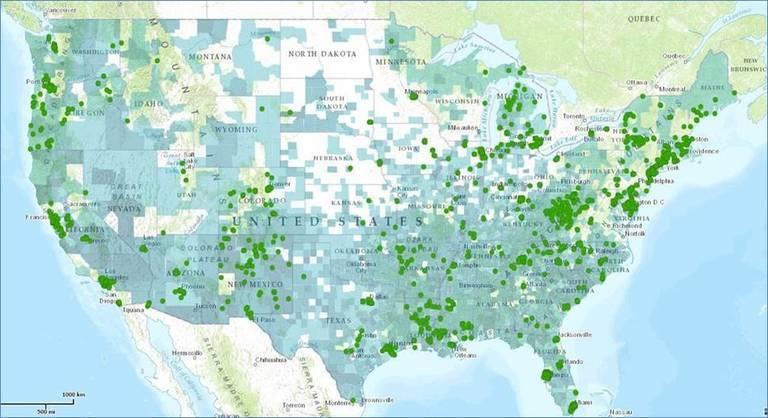

The ongoing debate over healthcare access and delivery underscores the fact that public health in the U.S. still has much room for improvement. These disparities are apparent in communities where racial and ethnic minorities comprise the majority population, as challenges from obesity to dental health continue to test local healthcare providers and policymakers.
Often at the core of this problem are resource allocation challenges. Resources (as in both people and funds) are often scarce, no matter how well a economy is performing -- or how large a foundation's checks may be. But one tool that can help communities meet these public health challenges is big data. And when coupled with the delivery of essential health services at places where citizens can access them most easily, the harnessing of publicly-available health data and statistics can make a difference for those who are the most vulnerable: kids.
TriplePundit recently spoke with Dr. Hayley Love of the School-Based Health Alliance (SBHA) to learn how the organization works with local healthcare providers to improve children’s lives across the U.S. Her background in medical anthropology, combined with her 15 years of work with children and teens across the U.S., England and overseas, led her to SBHA. And the key to her role in helping SBHA achieve its mission is to leverage quantitative data to ascertain the most pressing needs in some of the most underserved communities nationwide.
As Love explained, big data is critical to SBHA’s mission to improve access to healthcare for at-risk adolescents because it can pinpoint where additional health services, such as behavioral health and nutrition counseling, are most needed. Are there high rates of domestic violence? Does a particular area where a school is located happen to be within a "food desert?" The availability of data, from Love's point of view, is integral so that SBHA is spending its funds more effectively -- allowing the grants SBHA receives from organizations including the Aetna Foundation, Atlantic Philanthropies, CVS Caremark, Merck, and the U.S. Centers for Disease Control and Prevention more bang for their buck.
And the organizations working together to provide these health services for students may continue to tap into this data as they determine what additional types of care may be needed. As students' needs are better understood, other professionals that could provide services include behavioral health professionals, dietitians and even optometrists in order to provide students a “one-stop shop” while they are in the place at which they spend most of their time – school.
“The challenges these young people face is often because they live in a context that is really challenging, and sometimes even dangerous,” Love told TriplePundit. By analyzing data, these health care center administrators can even be proactive and gauge what kind of problems they will face before they start to hear about individual stories from students about their daily struggle.
In general, a school healthcare center is funded by a lead sponsoring organization -- which, in its role as the administrator, staffs the facilities and covers the costs. Its lead partner, the school, provides the physical space. But that arrangement is only the beginning.
A school and healthcare organization are hardly finished once a health center is opened and ready to provide essential services for kids. As Love explained, additional services could be as basic as a refrigerator full of snacks for kids who lack reliable access to food at home. The question frequently asked is, how can these health centers be staffed to deliver the services most pressing for kids in a particular community?
That's where big data comes into play.
SBHA's Children’s Health and Education Mapping Tool, supported by the Aetna Foundation, helps decision makers sort out as best as possible how they can meet the needs of children who lack reliable access to health care. “Our idea and vision was to create a resource that would allow big data to drive the allocation of resources,” Love explained, “and to allow anyone to utilize the tool to identify where needs could be most met. They can look not only at health statistics, but education indicators, and most importantly, locate the social determinants of health.”
As Love made clear, this tool can empower health care providers and administrators with knowledge of areas where children may be under-insured or not insured in at all. The tool’s data mining potential helps identify such neighborhoods with worrying levels of food insecurity, high dropout rates and above-average teen pregnancy rates -- and often reach far beyond standard data sets such as single parent households and poverty rates. “If you could understand not just one, but multiple indicators, the use of this tool is a great way to deliver much needed resources where there is the greatest need,” she told us.
Information that was once relegated to silos is now integrated, allowing administrators to see the big picture -- how various indicators can together suggest the greatest health risks confronting kids.
“Perhaps I want to know counties where there is a high prevalence of food insecurity compared to the national average, or where there is a high percentage of kids dropping out,” Love posited. “Why is this happening? How do we address how resources are fairly allocated? Who are the obvious community partners? All of this information is necessary to come up with strategies of how to address these problems at a grassroots level.”
And by knowing which inputs can help improve students’ health, the use of this data can provide the arsenal by which school administrators and health care providers can make their case for funding to either local policy makers or foundations. And the end result is a safe space for at-risk youth who now can access a place where they can confidentially discuss a current problem, have a quick snack when they have nothing else available – or can even be counseled over suicidal thoughts.
The stories Love told 3p, in addition to those posted publicly on SBHA’s site, are all over the map. A Brooklyn family was screened for tuberculosis after one family member was exposed to the bacterium. A Louisiana high-school student was able to see a dentist at affordable rates after a toothache made the completion of her studies nearly impossible. And an eighth-grader in New England started a nutritional health program at his school, which helped him lose 74 pounds.
All of these stories are attributed to the role SBHA has had in promoting healthier lifestyles across the U.S. They speak to the role other organizations can have and the use of data to position these services within the communities where they were needed the most. And, hopefully, they are just the beginning.
Image credit: School-Based Health Alliance/Facebook
How a Universal Basic Income Can Disrupt the Cycle of Poverty
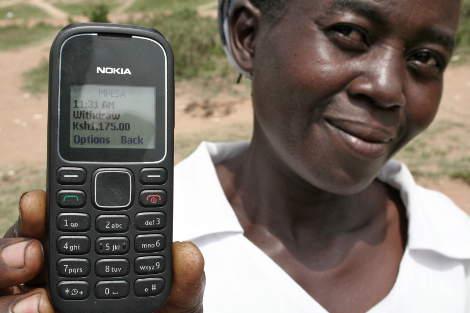

Talk of a universal basic income (UBI) has accelerated in recent months as analysts agree society needs a complete rethink when it comes to countering economic trends such as offshoring and automation. From a minor gubernatorial candidate in California floating an ambitious UBI proposal to a test pilot in Canada, momentum for UBI programs is building – but there is still much to learn.
The stress of wondering how the next meal, supply of diapers or medical emergency will be paid is endemic in both developed and developing nations alike. A pilot UBI program in Finland recently made headlines for a conclusion that almost never crosses economists’ minds: People are feeling less stress in their daily lives due to the €560 ($608) payments given to them with no strings attached.
Meanwhile, a program launched last year in Kenya found similar results. And the NGO behind the project, GiveDirectly, says its pilot further counters a longstanding argument against a UBI: Monthly supplement encouraged behaviors such as entrepreneurship and savings – not laziness and a rush to buy that bottle of booze.
To learn more, TriplePundit recently spoke by telephone with GiveDirectly’s Chief Financial Officer Joe Huston.
At a fundamental level, GiveDirectly is disrupting the norms of charitable giving and international aid. The traditional aid model has been for foundations or individual donors to give money to NGOs, who over the years have worked on a bevy of solutions: dig wells, distribute medicines, teach new farming methods or fund scholarships.
But one problem is that not all of these organizations are transparent about how that money is spent. For example, witness the Red Cross scandal after Hurricane Sandy, part of the reason why homeowners felt as if they got the shaft while insurance companies made millions. One could also point out accusations recently lobbed at Tom Brady for funding his pet causes with other’s people money. Naturally, the question donors have is: how much of my money is actually being used to do good?
GiveDirectly has a direct answer that question. Its funds are funneled to poor citizens in Kenya, Rwanda and Uganda, and they can use that money however they wish. “When you’re exclusively distributing cash, the donor-recipient relationship is very clear,” explained Huston.
But questions still fester over whether distributing cash with no restrictions is a good idea – even though hundreds of studies, including one by the World Bank, overwhelmingly have made the case that they succeed in lifting people out of poverty and, in fact, do not contribute to what is assumedly “lazy welfare recipient” behavior.
With that research in mind, GiveDirectly has tested various payout approaches. The NGO’s general practice is to give three payments that amount to about $1,000 over a year, which the organization says is roughly the equivalent of the basic income necessary for a family of four in the region in which it currently operates. Electronic payments via SMS messages are sent to individuals after they are vetted and confirmed as participants; they can then collect as much money as they need from a mobile money agent in their village or nearest town.
The vetting process undertaken by GiveDirectly is time-consuming. The organization’s staff parses through publicly available data to assess some of the poorest communities in these countries. Field staff knock on doors, collecting even more individual data. Additional checks are completed to ensure potential recipients have not received bribes. The results, say Huston, have been telling.
“The outcomes are consistent, as we saw large increases in assets like livestock, or people have invested for the long term, such as improvements to their homes like a tin roof,” said Huston, “and we’ve also seen more entrepreneurship, with incomes increasing after a year, often as much as 30 percent higher.”
At a macroeconomic level, the needs in countries as different as Kenya and Finland may be different, but the day-to-day experiences of the poor and unemployed in both countries are similar. For example, having a steady income supplement has reduced stress levels in communities in which GiveDirectly operates. Huston mentioned how one survey involved measuring levels of cortisol, the hormone that is excreted during times of stress. “Let’s face it: being poor is stressful,” explained Huston.
With several years of experience behind it, not to mention all of the data it has gathered over time, GiveDirectly decided to launch a project last fall to test the concept of a UBI. Since last October, 95 people in a western Kenya village have received about $23 a month – and will do for a total of 12 years. This community will serve as a test laboratory for GiveDirectly before it embarks upon a plan to send cash transfers to 200 villages across the country. The length of the trial could provide more answers about the long-term impacts of a universal basic income.
“If you give people more money up front, we know that they tend to buy bigger things, but on the flip side, if you receive cash for 12 years, we need to know if that will enable different types of investment,” Huston said. “That is something that deserves more study.”
While Huston and GiveDirectly are understandably reticent to make any broad conclusions based on a 12-year program that has only gone on for seven months, he said the results, including comments from over 100 recipients so far, are encouraging.
“That basic floor of $23 a month is meaningful to them,” he explained, “as 45 percent of them have never had that amount of money at once; 60 percent had never had the equivalent of two months of these payments.”
From Huston’s point of view, this program highlights the most direct way that basic income confronts poverty. “You can change that problem overnight by starting to provide it now,” he said, “because cash enables a pretty wide diversity of choices, as 100 people in a village can spend it on different things.” In sum, this small UBI pilot has become a local economic stimulus in its own right. More cash changes hands; then more wealth is generated.
One resident, a fisherman his whole life, outlined his plan: to save up three months’ worth of payments to buy one large net in order to revive his business. The example of this man, “Eric,” turned the timeless lesson of “Give a man a fish, and you feed him for a day - teach a man to fish, and you feed him for a lifetime” on its head.
“He certainly didn’t need lessons from us,” added Huston as he concluded his talk with 3p. “He needed capital.”
Image credit: GiveDirectly/Facebook
Unilever to Test New Plastic Sachet Recycling Technology
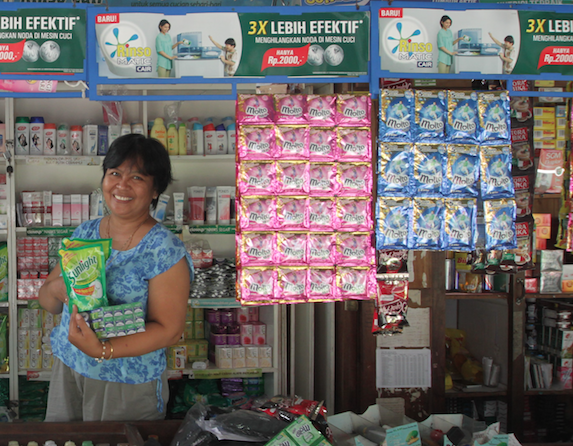

Wander about any market in Africa, Southeast Asia or the Indian subcontinent and you will see tiny sachets on sale everywhere. Filled with just about every product imaginable from shampoo to laundry detergent to condiments, they have helped many citizens who live at “the bottom of the pyramid” to enjoy the same consumer packaged goods (CPG) taken for granted in wealthier countries – only that they are more accessible and affordable as the purchase of a liter or so of product is no longer necessary.
These sachets have also boosted the fortune of CPG companies such as Unilever and Procter and Gamble by allowing them to enter new markets by doing little more than repackaging their products into tiny parcels. Some of them actually solve a problem, as in P&G’s water purification packets.
But these little sachets have together posed a huge problem – walk those same streets in Africa, India or Southeast Asia, and you will see them buried in mud or scattered on sidewalks. These sachets, while offering a lifestyle change for many citizens, also create environmental problems within their communities. Unilever, for example, has countered that in sheer volume of waste, the packaging is more efficient, as there is actually “less waste by weight per milliliter of product” compared to boxes or bottles. That may be true, but the sachets are still adding up -- creating both an aesthetic and environmental mess.
To that end, Unilever has announced that it will test a new technology in an attempt to recycle this waste and close this gaping loop.
The problem has long been that most sachets are manufactured out of a thin layer of plastic and aluminum. That combination allows these products to have a longer shelf life, while preventing leakage before use. But they are also nearly impossible to recycle. The challenge goes beyond finding a way to remove that plastic sheath from the aluminum or any other polymer. After all, towns and cities in emerging economies often lack any such waste diversion infrastructure in the first place.
To solve that problem, Unilever has partnered with Germany’s Fraunhofer Institute for Process Engineering and Packaging IVV, an organization that has long been focused on making food products and packaging both safe and sustainable.
The outcome is what Fraunholfer calls the CreaSolv process, which has already been tested for recycling plastics, and separating flame retardants, from electronic waste. Plastic will be separated from those sachets, which in turn will be processed into new sachets for Unilever products – which the company says will nudge it towards a true circular economy.
The technology will be first tested later this year in a pilot project in Indonesia. The most populous country in Southeast Asia has had its own struggle with plastic waste, as Indonesians generate 64 million metric tons of trash annually – with 1.3 million metric tons of it ending up in waterways and oceans.
Unilever has launched pilot projects before in an effort to reduce the waste resulting from the hundreds of billions of sachets sold annually. In 2012, the company tested a technology that turned those waste sachets into fuel. While Unilever said this pyrolysis technology “proved” it could create a stream of fuel, there is no evidence that process ever scaled, and the company has not mentioned it in recent years.
And even if this technology scales, the cart that has to be placed before the horse is having a waste and recycling collection system set up in the first place. In an emailed statement to TriplePundit, the company said that it would look into creating “sustainable system change by setting up waste collection streams to channel the sachets being recycled.” To make this a reality, Unilever said it is working with local waste banks, retailers and government officials. One such outcome could be a more steady stream of income for waste pickers, who have benefited from some social enterprise projects in Indonesia but have long lived on the margins of society.
The numbers alone suggest the scope of the problem, and the opportunities that abound. Unilever has noted that what the CPG sector calls the “global consumer flexible packaging” market is a $229 billion business that will continue to grow. And it will continue to clog waterways and become a public health nuisance if the waste resulting from these products is not effectively tackled. This recycling project is a tiny baby step forward in stalling what has become a massive global environmental footprint.
Image credit: Unilever
Tesla’s Solar Roof Tiles Make Waves for Aesthetics and Affordability


Owning Tesla stock, or just following the company in general, is like dangling at the end of a yo-yo.
Just when you reach a high over another exciting chapter in the company’s clean-energy or automobile developments, you hurtle down yet again as the company’s promises don't quite match up.
But Tesla has reached yet another peak with the announcement that its much anticipated solar roof tiles are ready for market.
Tesla boasts that the tempered glass tiles are three times stronger than conventional roofing materials. Whether homeowners gravitate toward a textured or smooth appearance, Tesla guarantees the tiles for the life of the roof, the home or, in what seems to be a deal too good to be true, the longer lasting of the two. The company suggests the tiles be installed with a Powerwall battery, which Tesla says will allow consumers to use more of the power generated by their roofs and guard against sudden grid outages.
And despite what appears to be a steep price tag, the long-term financial benefits from the company’s point of view are obvious.
Potential customers who are interested need to plunk a $1,000 deposit, and they can glean a quick estimate on Tesla’s website.
Let’s use a 2,500-square-foot home in my hot-as-Hades San Joaquin Valley city as an example. The sticker shock may give me palpitations at first: $70,900 for the roof – of which actually only 40 percent of the tiles would generate solar power, a suggestion made by Tesla. But even after the $7,000 price of a Powerwall, plus federal and local solar tax credits, Tesla claims this home would produce $116,700 worth of energy over 30 years – or an “earning” of $56,200 during that span.
So, is this a wise investment, or just fuzzy Silicon Valley “unicorn” math?
True, that price is more expensive than a conventional roof that generates no energy. But, on average, the latter needs significant repairs or a total replacement every 20 years. And Tesla’s suggested cost is less pricey than the typical solar roof with clunky aluminum frames and battery packs. “The pricing is better than I expected, better than everyone expected,” said Hugh Bromley, a solar analyst at Bloomberg New Energy Finance, who was interviewed in a story for Bloomberg’s news service yesterday.
Tesla says its estimated cost per square foot, $21.85, beats out a forecast made by Consumer Reports, which last fall said would have to be $24.50 or less to be price competitive with standard residential roofs.
A report on CNBC was less enthusiastic about this latest development, saying 2017 is proving to be a difficult year for many solar installers. Nevertheless, the novelty of these tiles, backed by the power of Tesla’s brand, could be a game changer.
And Tesla has also eschewed the annoying door-to-door and telemarketing sales tactics that to many consumers, have recast used car salesmen as a far more attractive crowd from whom to buy goods and services. Such a shift in strategy also lowers Tesla’s costs of both selling and installing residential solar power systems. The fact is that if someone is visiting Tesla’s solar web pages now, they are probably fairly serious about investing in such a system.
There is caveat to Tesla’s latest news, however: The recent history of solar tiles -- or, in industry terms, BIPV (building-integrated photovoltaics) -- is not a pretty one. Dow Chemical, for example, was once bullish on solar tiles, but pulled the plug on that product line last year after sales grew anemic. Ascent Solar and Energy Conversion Devices are among several other companies in the solar tile graveyard.
The news comes a month after Tesla, along with its manufacturing partner Panasonic, generated buzz over its sleek new solar panel systems. But that enthusiasm was tempered when it turned out Tesla revealed little information about this next generation of solar rooftop installations. But yesterday’s news gave Tesla a shot in the arm. As of press time, its stock price was up almost 4 percent.
Image credit: Tesla
Tiffany & Co. Makes Its Point: Presidents Come and Go, But Diamonds are Forever


As the firing of FBI Director James Comey swamps the news cycle, an amazing public statement by Tiffany & Co. still glitters through the muck. On Tuesday morning, the legendary American jeweler issued a terse but vehement pitch in favor of the Paris climate agreement, addressed directly to President Donald Trump.
The Tiffany statement comes at a particularly bad time for the president. Though his administration reportedly pre-planned an elaborate media campaign to cushion the blow of the Comey firing, Trump has been weathering a devastating firestorm of criticism ever since the White House announced the move on Tuesday evening.
The Tiffany & Co. climate statement
Though brief, the Tiffany statement packs a powerful punch.
Here is is, as it appeared on the company's Twitter handle, @TiffanyAndCo, on May 10 at approximately 7:30 a.m. Eastern Standard Time:
Tiffany could have made a similar point with a simple statement in support of the Paris agreement, without mentioning Trump by name.
By casting the statement as a direct, personal message to the president, Tiffany crossed the line into politics -- a rare move for the company.
And by choosing its iconic blue box as a background color, Tiffany added an extra layer of visual impact to the statement, openly encouraging its customers to identify the pro-Paris position with the Tiffany brand.
Trump vs. Tiffany brands
Many (many!) other top U.S. companies and other stakeholders have stepped forward in support of the Paris agreement. But it is difficult to spot another one that carries the weight of the Tiffany endorsement in terms of significance for the Trump brand with respect to its association with New York luxury.
Tiffany is a luxury brand that exemplifies everything to which the Trump brand aspires. The company's flagship Manhattan store is located in Trump Tower on 5th Avenue. Tiffany describes the store as a magical place: "It is simply the most famous store there is. Every cab driver, every New Yorker, every visitor knows where to find Tiffany & Co. This is the marvelous place where dreams come true."
The Trump brand has been trying hard to play catch up with Tiffany for many years, but there is one significant reason why it never can -- even though it shares the same building.
In the U.S. and many other countries, wealth and status have a great deal to do with roots and history. That "old money" bar is all the higher in New York City, where Manhattan holds the central position of status against the four outer boroughs.
The Trump brand is famously rooted in one of those outer boroughs: Queens. Its direct history can be traced only as far back as the 1970s when Trump became president of his father's real estate company.
In contrast, Tiffany can claim Manhattan roots for its brand in a straight line all the way back to 1837, when its first store opened on Broadway:
"On their way to the new emporium at 259 Broadway, fashionable ladies in silks, satins and beribboned bonnets faced a gauntlet of narrow streets teeming with horses and carriages. At Tiffany & Co. they discovered a newly emerging “American style” that departed from the European design aesthetic, which was rooted in ceremonial patterns and the Victorian era’s mannered opulence. The young entrepreneurs were inspired by the natural world, which they interpreted in patterns of simplicity, harmony and clarity."
Many other companies that came after Tiffany have established their own way to identify with luxury. However, the Trump brand has carved out a Manhattan identity that can never match up to an old-money company like Tiffany. Even if such comparisons sit widely out of touch with most Americans, they appear to matter to Trump's companies, at least if prior positioning is any indication.
Somewhat ironically, Trump and Tiffany do share one thing in common: both started their careers with the help of family money.
To be fair to Tiffany, though, the $1,000 loan from his father that enabled Charles Lewis Tiffany to open his first store pales beside the $8.5 million Trump borrowed from his father to escape bankruptcy in the 1970s, even accounting for inflation.
Sustainability matters
Speaking of inspiration from nature, among the many things that the Tiffany and Trump brands do not share in common is a solid track record in corporate social responsibility.
Tiffany first hit the TriplePundit radar with its 2014 corporate social responsibility report, but the company had already laid the groundwork years before:
"Twenty years before many luxury goods companies began to pay attention to the sourcing of raw materials and how people working within their supply chains were affected, Tiffany’s developed policies that are increasingly becoming more mainstream throughout the jewelry industry."
In 2015 TriplePundit took note of Tiffany's responsible mining policy:
"As a founding member of the Initiative for Responsible Mining Assurance (IRMA), the company has collaborated with representatives from industry, NGOs, impacted communities, labor organizations and others to develop third-party, multi-stakeholder standards for responsible mining."
And, last year TriplePundit published an article by Tiffany & Co. chief sustainability officer Anisa Kamadoli on the company's support for artisanal miners through the Diamond Development Initiative:
"The concept of DDI emerged in 2005 and its operations began in 2008. DDI picked up where the Kimberley Process Certification Scheme left off. While the Kimberley Process has made progress toward eliminating 'conflict diamonds' from the rough diamond supply chain, this focus on trade alone did not change conditions for artisanal miners.
"For nearly 10 years, the Tiffany & Co. Foundation has provided funding to DDI because the organization takes an expansive, long-term approach to improving the lives of miners, their families and their communities."
Leadership comes from the top
If you caught that thing about "chief sustainability officer," that's a key part of the equation.
Successful corporate sustainability initiatives happen when top leadership is involved. In 2014, TriplePundit published an exclusive interview with Ms. Kamadoli, in which she described her company's CSR team:
"Sustainability has always been a part of Tiffany & Co. and is central to how we operate as a luxury brand. Our commitment to sustainability was formalized in 2009 with the establishment of the CSR Committee of the board of directors, as well as my department. I report directly to Michael Kowalski, chairman & CEO of Tiffany & Co., who is extremely knowledgeable and passionate about the environmental issues that the company addresses."
Ms. Kamadoli elaborated on that theme:
"The fact that our team has such strong senior-level support allows us to collaborate closely with internal and external stakeholders and to continue to lead our industry."
With all of this in mind, it's little wonder that Tiffany & Co. took the extraordinary step of calling out President Trump by name on climate change and the Paris agreement.
As of this writing, President Trump has pushed back a decision on whether or not to keep the U.S. in the international climate accord.
Certainly he has other things on his mind this week, so perhaps the delay will give his daughter and top advisor, Ivanka Trump, an opportunity to exercise her alleged moderating influence on his approach to climate action.
Then again...
Readers please note: "A diamond is forever" is an advertising slogan created by Frances Gerety for De Beers during her long career at N.W. Ayer.
Images: top (cropped) via Tiffany & Co. website; bottom via @TiffanyAndCo.
5 Ways Leaders Can Bridge the Generational Divide


By Sarah Clark
Today’s workforce is an amalgamation of multiple generations, each with a unique focus and set of needs.
Baby Boomers, for example, are hardworking and have goals that align with their lifestyle choices. They value position and prestige and are willing to work long weeks to see professional growth. Generation Xers, on the other hand, are responsible for the concept of a work-life balance. They have strong technical skills and know how to adapt to instability in their careers. Millennials are part of a global-centric generation. They appreciate diversity and inclusion, are team-focused, and are resilient in a quickly changing technological and business landscape.
With such a diverse team of employees, managers face the steep challenge of aligning goals and motivating individuals — and agile management is key to overcoming those hurdles.
The advent of agile management
Millennials have sparked key changes in traditional management and motivation — in a good way. Their attitudes and goals have reshaped and will continue to reshape business structures and cultures, ending the bottom-line focus spearheaded by the generations before them.
Millennials are team players who check in with one another often. They are good listeners and are willing to work hard to achieve their goals. They have the potential to grow into great managers because of their communication styles and abilities to mentor others.
That said, managers need to adopt certain agile leadership traits in order to effectively empower this group of future leaders. Agile leaders influence and study their diverse stakeholders and are quick to act and make decisions. They stay relevant and are able to release any perspectives no longer relevant to the workplace.
However, the necessity of agile leadership isn’t just a millennial view anymore. Nicholas Pearce, a clinical assistant professor of management and organizations at Northwestern University's Kellogg School of Management, recently revealed that the generations’ views of leadership are more in sync than most people would think.
"In this knowledge economy, we have seen the rise of what we might call 'leadership by commitment,’” Pearce said. “It engages and motivates and enables and integrates people to come together to make a common goal or vision a reality. This is a shift in leadership that we have seen really over the last few decades, and people of all generations would love to have leadership like this.”
Nurturing generational differences
So how does a manager become more agile and nurture employees from different generations? Here are five key actions:
1. Set concrete expectations and goals: As each generation has differing motivations, managers should set independent goals for individuals. Providing clear expectations allows for equality across the company and fosters growth and enthusiasm. Encourage group goals as well, taking advantage of the diversity of thought and motivation across the generations.
2. Encourage mentoring: Each generation offers unique strengths and knowledge sets. Encourage employees to mentor one another on technology, industry knowledge, and culture. The Boomers might be reluctant to have a millennial step in, but this inclusivity allows their differences to be framed as a positive and helps employees feel valued. Teamwork also leads to faster, more unique solutions.
3. Ditch the culture of seniority: Don’t always assume the most senior employee’s ideas are the best. Encourage boardroom meetings in which everyone contributes and offers solutions. Evaluate each suggestion, then choose the best one for your company.
4. Turn challenges into learning tools: A good leader learns constantly — often from the employees he or she manages. When facing challenges, an important trait is the ability to stay calm and engaged while coming up with a solution. Employees across all generations appreciate a manager who can adapt, especially one who can accept feedback and grow.
5. Foster communication: The generations have unique communication styles. Gen Xers prefer to use the phone or email, while millennials resort to texting or instant messages. Throw in abbreviations, minimal punctuation, and a lack of capital letters, and you’re facing a downward spiral in communication. Managers should try to communicate with each generation in its preferred method but also encourage in-person interactions among the employees as much as possible.
Choosing to manage to your employees’ specific needs and motivations can seem overwhelming at first. But once adopted, the process allows for success and increased productivity, as your employees know you view them as individuals rather than as cogs in a larger machine.
Image credit: Pexels
Sarah Clark is the president of Mitchell, an award-winning public relations firm that creates real conversations between people, businesses, and brands through strategic insights, customized conversations, and consumer engagement. The agency is headquartered in Fayetteville, Ark., with offices in Chicago and New York City. Mitchell is part of Dentsu Aegis Network, which is made up of nine global network brands and supported by its specialist/multimarket brands. Dentsu Aegis Network is Innovating the Way Brands Are Built for its clients through its best-in-class expertise and capabilities in media, digital, and creative communications services. Offering a distinctive and innovative range of products and services, Dentsu Aegis Network is headquartered in London and operates in 145 countries worldwide with over 30,000 dedicated specialists.
Clark is one of the top strategic communications professionals in the country, with more than 25 years of experience in corporate communications and an exceptional track record in protecting corporate reputations and redefining perceptions in key areas of business.
Sedentary lifestyle costs UK £1.2bn annually


Donald Trump's 'Goofy' Trade War With Canada: Explained


Over the last few months, the Donald Trump administration has learned a hard fact: America's mild-mannered neighbors to the north have a back bone. And they have spunk, too.
They may like being called a 'friend' by the U.S. president, and the Canadian government may consider the U.S. its premier trading partner. But for Canada, when it comes to milk and softwood lumber -- the two commodities that helped cement its foothold in the global marketplace -- protecting its economy comes first.
Canada's 'subsidized' softwood lumber
The heart of the discord between Canada and the Trump White House is the cross-border softwood lumber trade, a headache that has vexed presidents and prime ministers of both countries for decades.Some place the start of the U.S.-Canada disputes as far back as the 19th century when Canada's lumber industry was first gaining its strength. Others point to the late 20th century when the two countries sat down and hammered out the first of many accords. But either way, the Canadian softwood industry has been crucial to the economy of both countries.
Exports, which now figure in the billions of dollars, prop up the American home construction industry. Back in Canada, that revenue fuels the growth and management of publicly-owned forests.
But American lumber companies say Canadian softwood is subsidized by its government before it ever arrives to the U.S. border. That's because the Canadian government manages not only the amount of trees that are cut on its publicly-owned Crown lands, but also the fees that lumber companies pay to harvest them. In effect, this process ensures the affordability of an industry that kept Canadian towns in existence for centuries. It has also been backed by World Trade Organization rulings.
Former U.S. President George W. Bush and former Canadian Prime Minister Stephen Harper called a temporary detente by agreeing to limit Canadian lumber imports until 2015. But the absence of a new agreement when Trump took office (the Canadian government now admits that was a mistake) provided fertile ground for new disputes over what some say is a philosophical difference about how to manage forests and resources.
The U.S. Commerce Department renewed this fight last month by slapping tariffs on products from five Canadian companies it said were receiving subsidies. The department set those tariffs according to the subsidies the companies received, which ranged from 3 to 24 percent. It also levied a tariff of 20 percent against all other Canadian softwood exports.
The tariffs put new pressures on Prime Minister Justin Trudeau, who is determined to prove to Canadians that he can not only communicate with Trump effectively, but that he can also stand up to the U.S. president's jabs against Canadian policies.
This month Trudeau informed the administration that Canada may strike back by banning the transport of thermal coal exports through Canada.
This salvo won enthusiastic support from Canada's western province, British Columbia, where some 94 percent of U.S. thermal coal shipments pass on their way to Asia and other destinations.
But it garnered rebuke from former U.S. President Jimmy Carter who, in a rare move, has supported the Trump administration and called for enforcement of U.S. trade laws to protect American lumber industries.
But Canada may not be finished with the issue. This week the Canadian government raised the inevitable topic of U.S. industries that it says also benefit from subsidies. According to one source, Canada is investigating the possibility of imposing its own tariffs against Oregon exporters that get price cuts in the U.S.
No spilled milk here
Then there are the Canadian dairy farmers and the Canadian manufacturers: two groups that have been at odds recently over the use of cheaper U.S. dairy imports.Ottawa places production quotas on Canadian milk to ensure against over-production. It also places tariffs and limits to control the amount of milk that is imported; a measure the government says protects Canadian farmers. But critics say the result is higher dairy prices at Canadian supermarkets. It also makes it hard for the U.S., which does not place controls on its dairy industry, to sell large amounts of milk to Canada.
Unless, that is, it's a new ultra-protein-rich product that is being manufactured by U.S. dairy companies. Canadian laws exempted that product from limits and tariffs, encouraging Canadian manufacturers to bolster their supply chain with cheaper U.S. protein sources.
That brought Ninja, the Holstein cow to the rescue.
In June 2016, Canadian farmers, fed up with revenue losses from U.S. dairy imports, staged a media-grabbing protest at the steps of Canada's Parliament in Ottawa. A long line of clunky field tractors, traffic gridlock and their cud-chewing media rep helped to convey just what Canadian farmers wanted Ottawa to hear: Canadian industries should come first when it comes to trade policies -- and loopholes.
Ottawa, for its part, did little to settle the fray. According to dairy representatives, it was good ol' conventional negotiations that forced the Canadian dairy farmers and manufacturers to sit down and come to an agreement: The farmers would lower their price for proteins, and domestic manufacturers would stick around and buy from Canadians.
Once the agreement was struck, Ottawa stepped in and shut the import loophole that allowed U.S. importers to ship their milk products across the border. Trump fired off an angry tweet in response, followed by a firebrand speech in Wisconsin where he promised to "call Canada" and investigate the change of policy.
More complex trade with Canada?
To President Trump's credit, his ire on both of these issues has managed a rare feat: It unified a small but significant group of Democrats and Republicans who feel that U.S. industries are getting a short shrift at their northern border. And it prompted questions about the best way to negotiate with global partners for mutual benefits.Trump's response has elicited a rash of criticisms from former U.S. ambassadors who are well acquainted with trade issues between the two countries and have questioned the administration's use of public tweets and statements instead of patient, diplomatic discussions.
"Words matter. Words matter diplomatically," Bruce Heyman told a gathering organized by the Council of the Great Lakes. "Words matter with leaders. And I think the words that have been used have been unfortunate and have not been constructive."
"It's goofy stuff," James Blanchard, a former governor of Michigan and U.S. ambassador, said bluntly of Trump's tweets about Canada's dairy regulations, "and frankly unbecoming of the leader of our country."
For now, the adversarial relationship between the U.S. and Canada means that the American housing market may become more expensive as builders -- and consumers -- foot the bill for softwood tariffs passed on by rising costs. And in a feat not seen in years, it also means that Canada may very well solidify new liaisons with other trade partners in the coming months. The province of British Columbia has already started shipping lumber to China, and talks between Mexico and Canada have yielded a new diplomacy between the two countries' young statesmen bent on ensuring they have the best and strongest trade advantages for their respective nations.
Whether Donald Trump succeeds in "making America great again" is yet to be seen. But his galvanizing speech does seem to be having an impression in Canada and Mexico, where industries once in liaison with America's interests are finding their own path to even greater resiliency.
Flickr images: 1) meridican 2) hobvias sudoneighm;
Report: Autonomous EVs Will Transform U.S. Cities by 2030
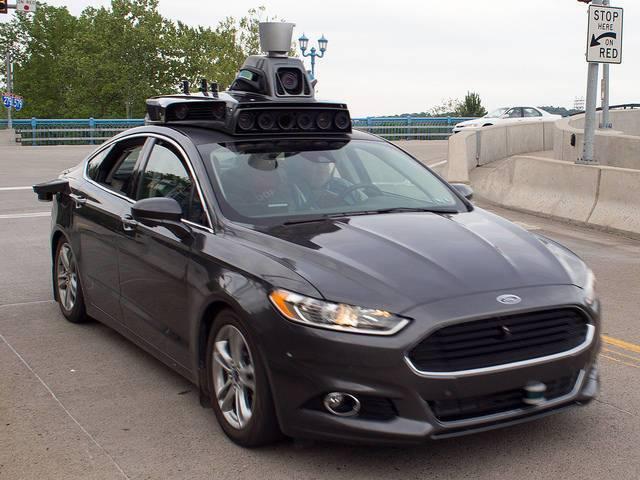

Sick of being stuck in traffic? By 2030, your daily commuting nightmare will be a distant memory. And you won't have to grip that steering wheel in angst any longer, as a self-driving car will ferry you from your home to your office to your favorite watering hole in the evening.
At least, that is the wildly optimistic prediction from RethinkX, a California think tank that insists the 100-year history of private car ownership will soon come to a screeching halt. Forget the Clean Power Plan; forget the Keystone Pipeline; and never mind your political leanings or the deluge of executive orders from U.S. President Donald Trump and his predecessor, Barack Obama: Driving will be completely different in 13 years thanks to economics, and cities will be transformed in the process, as parking garages and disruptive street-widening projects become a 20th-century anachronism.
The future, say RethinkX’s researchers, will be driven not by individual drivers, but by transportation as a service (TaaS). The team at RethinkX looked at several factors to reach their conclusions, including future U.S. passenger car fuel demand, the predicted future of trucking, energy forecasts in overseas markets and several of the U.S. Energy Information Agency’s forecasts. The study also relied on the assessments of what analysts predict will be the most popular automobile models in the coming decade, assumptions of future electric vehicles’ range per charge and the cost of manufacturing these next generations of vehicles.
RethinkX's predictions are certainly bold, and will cheer those who believe society is barreling toward a dystopian future due to climate change risks. The study’s authors say oil consumption will increase in the near term, but will peak at 100 million barrels per day worldwide sometime in 2020 – a figure that will drop to 70 million barrels daily by 2030.
With consumption figures like that, much of the domestic shale oil and tight oil production would no longer be commercially viable. Major fossil fuel projects such as the Keystone and Dakota Access pipelines would be rendered useless. Overseas, major offshore oil production sites in countries like Nigeria, Norway, Venezuela and the United Kingdom would no longer be profitable; the same fate would befall the oil sands in Canada.
Oil prices may crater further in price to as low as $21 a barrel by 2021, RethinkX predicts; but that low cost will not excite drivers, as changes in how most Americans will move about town will render our notion of car ownership increasingly obsolete during the 2020s.
According to RethinkX, as autonomous cars become approved by regulators and increasingly accepted by consumers, companies including Uber, Google, Baidu and Tesla will be ready for this new reality as automated driving converges with the advancement in electric car technologies. And the conventional automakers such as GM and Ford will have no choice but to transform their business models, as it will eventually no longer make economic sense for most Americans to own their own vehicles.
As electric cars become cheaper and ridesharing companies take advantage of that scale, the result will be that the price of TaaS could be as low as one-tenth of the cost of individual car ownership. And even if a consumer’s vehicle is paid off, the cost of operating it will still be 25 to 50 percent higher compared to what that same person would spend exclusively on an autonomous car service.
From RethinkX’s point of view, the growth of electric self-driving cars will create a monster onto itself: The lack of maintenance necessary for a typical car with an internal combustion engine means that this next generation of vehicles can roam the roads 10 times more often than the cars of today. Hence the days of cars sitting idle 95 percent of the time will be over, as future vehicles will be constantly shuttling around town taking passengers to work, home and play. Car ownership would become the exception, no longer the rule, as 80 percent of adults will turn to a future ridesharing subscription instead, RethinkX projects.
Such a reality would translate to a massive macroeconomic benefit, too, as the average household would save $5,600 in expenses annually. That could provide quite the financial windfall, as these trends could boost U.S. GDP by up to $1 trillion, perhaps even ending any nascent talk of a future need for a universal basic income.
Key to this scenario is technological advancement, full regulatory approval and, most importantly, consumers’ embrace of what is generally described as “Level 5” (full autonomous vehicles). If this technology does not advance, then all bets are off.
But some cities are already in the motions of planning for a future where sidewalks could be wider and less space is needed for parking. San Francisco, for example, started a “parklet” movement earlier this decade that has transformed over 40 former parking spaces into mini open spaces. And Pittsburgh, where Uber has launched an ambitious self-driving car testing laboratory, is eschewing street-widening for more bicycle lanes and wider sidewalks.
Even if ReThinkX’s vision is only reached halfway or less, America’s increasingly congested “smart cities” could become more pleasant places in which to live and work.
Image credit: Foo Conner/Flickr
Donald Trump: The Newest Corporate ‘Risk Factor’
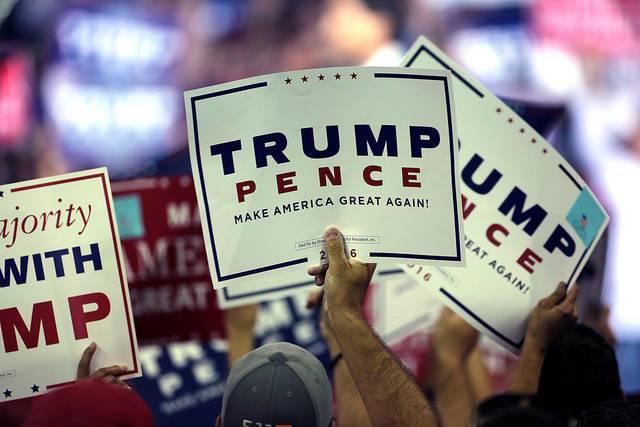

Researchers are noticing a trend in corporate Securities and Exchange Commission (SEC) filings: Donald Trump.
According to the financial data research firm Sentieo, America's publicly-traded companies have mentioned Trump in several hundred SEC filings since he became president. The vast majority of their concerns fall into three categories: financial regulations, energy policy and healthcare reform.
On one hand, that should not be too surprising. The SEC has long mandated that companies advise current and potential investors about risk factors, whether they are discussed in annual reports (form 10-K), quarterly updates (10-Q) or in an 8-K, which is required within four days of a “significant event” such as a change in executive leadership, bankruptcy or other factors that could have a sudden impact on a firm’s performance and, therefore, stock price.
Over the years, securities attorneys and corporate governance advisors pushed their clients to err heavily on the side of caution to reduce the risk of getting sued – which is why disclosures such as “if we are unable to effectively train and equip our sales force, our ability to successfully commercialize [enter product here],” which seem obvious for a lemonade stand, will appear throughout these filings.
But as the Wall Street Journal reported this week, so far companies mentioned Trump at three times the rate of his predecessor, Barack Obama. Considering the 44th president was often described as the most liberal politician elected to the White House in decades, and that in 2009 he made it clear health care and financial markets reform were high priorities on his agenda, the rate at which companies are mentioning Trump at the very least raises eyebrows.
Of course, another argument that could be made is that businesses crave certainty, even if they disagree with policies. When Obama was elected, he had a huge majority in the House of Representatives and 60 senators on his side. So, by most accounts, companies expected and prepared for changes such as Dodd-Frank or the Affordable Care Act. But when an administration talks about discarding policies -- and no one knows what the outcome will be -- then you have the emergence of a collective freak-out; and this is especially true of health care.
The WSJ’s Theo Francis, Ryan Knutson and Julia Wolfe dug deep into Sentieo’s data, and found that 237 healthcare companies mentioned Trump by name in their filings since he took office in January. In addition to discussing the risks of repealing Obama’s signature healthcare law, many of these companies also shared information on risks related to corporate tax reform.
The rate at which Trump is mentioned is more than a ten-fold increase over such disclosures made during Obama’s first 100 days in office, suggesting that many companies assumed the changes in America’s healthcare system were a fait accompli. And as healthcare companies realize that, despite the many complaints, Obamacare has actually been a profitable venture for them, they are quick to warn investors that their ledgers may not look so pretty over the next few years.
Uncertainty is also driving many of these companies’ warnings to investors. As Ireland-based anti-inflammatory drug company Horizon Pharmaceuticals told its stockholders, floated proposals such as a “border adjustment tax,” which would increase the cost of imports into the U.S., are one of many concerns that companies have about the new administration.
So while Wall Street and the stock markets together may be crowing about an era of deregulation, many individual companies are expressing concern about what is on Trump’s populist agenda. Hedge fund manager Blackstone Group, for example, warned investors that if Trump’s ideas for changing the capital gains tax laws come to fruition, the company may struggle retaining and recruiting talent.
Furthermore, the question over how much Trump can actually accomplish is worrisome to firms, including Martin Marietta Materials. Noting that its business depends on government spending, the company emphasized that Trump is keen on boosting infrastructure investment. But that depends on Congress, leading the company to conclude that “we cannot be assured, however, of the existence, amount, and timing of appropriations for spending on future projects.”
Image credit: Flickr/Gage Skidmore